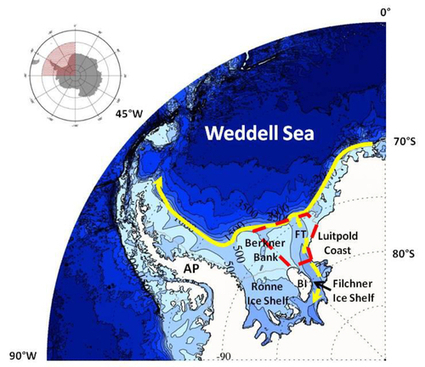Significant scientific research has been published in recent weeks on the impact of global warming on changing wind patterns and southern ocean currents and the flow-on impact on Antarctic ice shelves and glaciers. The most recent studies reveal the potential instability of the Filchner-Ronne Ice Shelf in the Weddell Sea area. But the real questions to be asked concern the long term stability of the West Antarctic Ice Sheet (WAIS) and how rapidly it could collapse raising global sea levels by up to 6 metres.
I highlighted in November 2011 that the Thwaites and Pine Island Glaciers accelerating, West Antarctic Ice Sheet losing mass in the Amundsen Sea area. Now climate researchers of the Alfred Wegener Institute for Polar and Marine Research in the Helmholtz Association studying the opposite side of the West Antarctic Ice Sheet (WAIS) in the Weddell Sea area have discovered a mechanism which will drive warm ocean water towards the coast in the later decades of this century, allowing a higher rate of basal melting - the melting from underneath of ice shelves and glaciers by warmer ocean currents - leading to greater discharge of ice from the icesheet.
Another research team has found a large deep basin, about 20,000 square kilometres in size and up to 2 kilometres deep, underneath the ice sheet in the Weddell Sea area, which makes the ice sheet inherently unstable if pinion points for the ice shelf retreat and warmer water enters the basin.
Via ABroaderView



 Your new post is loading...
Your new post is loading...







